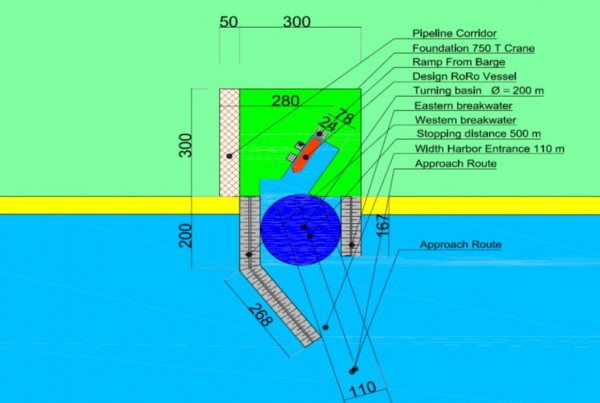
Geosynthetic systems allow the construction of financially attractive, innovative and sustainable solutions.
Advantages of geosynthetic systems are flexibility in design, cost-effectiveness and speed of installation. In many areas, there is not enough rock nearby to allow structures built of rock. Using this technology sand and soil from the immediate area result in stable structures. This can significantly save the costs compared to trucking in materials.
The general shortage of land and basic construction materials (such as gravel) increases the need to construct on difficult terrain (soft soils) with only locally available materials. Therefore the challenge for the construction industry to create good bearing soils for development and to protect readily available terrains steadily increases.
CDR provides services including geosynthetics designs, feasibility studies, construction drawings and on-site support.
Approach
In our approach we compare the geosynthetic solutions with traditional solutions. Once the site is identified, after a site investigation, we can prepare alternative conceptual solutions, including the geosynthetic alternatives.
Next, the feasibility of the geosynthetic solution is compared with traditional solutions and methods like deep soil mixing (mixed-in-place) and stone or sand columns. Often, the geosynthetic solutions require less space and are financially attractive over traditional solution. We emphasize that designs are based on (inter)national standards, taking the clients wishes, design criteria and local soil and hydraulic parameters into account.
After the design phase, construction and operation criteria are combined with inspection and site supervision. Different geosynthetic solutions from different providers are compared in order to obtain the best solution for the project.
Services
CDR provides preliminary and detailed geosynthetics engineering designs which meet up to (inter)national standards. Both preliminary and detailed geosynthetics engineering designs can be performed based on (inter)national standards, taking into account design criteria and local soil and hydraulic parameters.
These services include geosynthetics designs, feasibility studies, construction drawings and on-site support in the following fields:
Earthworks and Foundations
- Walls and slopes: geosynthetic reinforced soil systems (GRS)
- Embankments: on soft soils, on piles, on geosynthetic encased columns (GEC), over sinkholes
Roads and Pavements
- Asphalt reinforcement to prevent reflective cracking: rehabilitation of asphalt pavements and concrete pavements
- Base reinforcement to increase bearing capacity of base courses and to reduce deformations and rutting: temporary roads and working platforms, permanent roads and pavements, railway base courses
Hydraulic Engineering
- Coastal engineering: breakwaters, revetments, bank protection, dams and dikes
- Waterways: canal linings, erosion control solutions, dams and dikes, bed and scour protection
- Water bodies: lining and erosion control solutions, bank protection
Dewatering: sludge dewatering by geosynthetic tube containers


